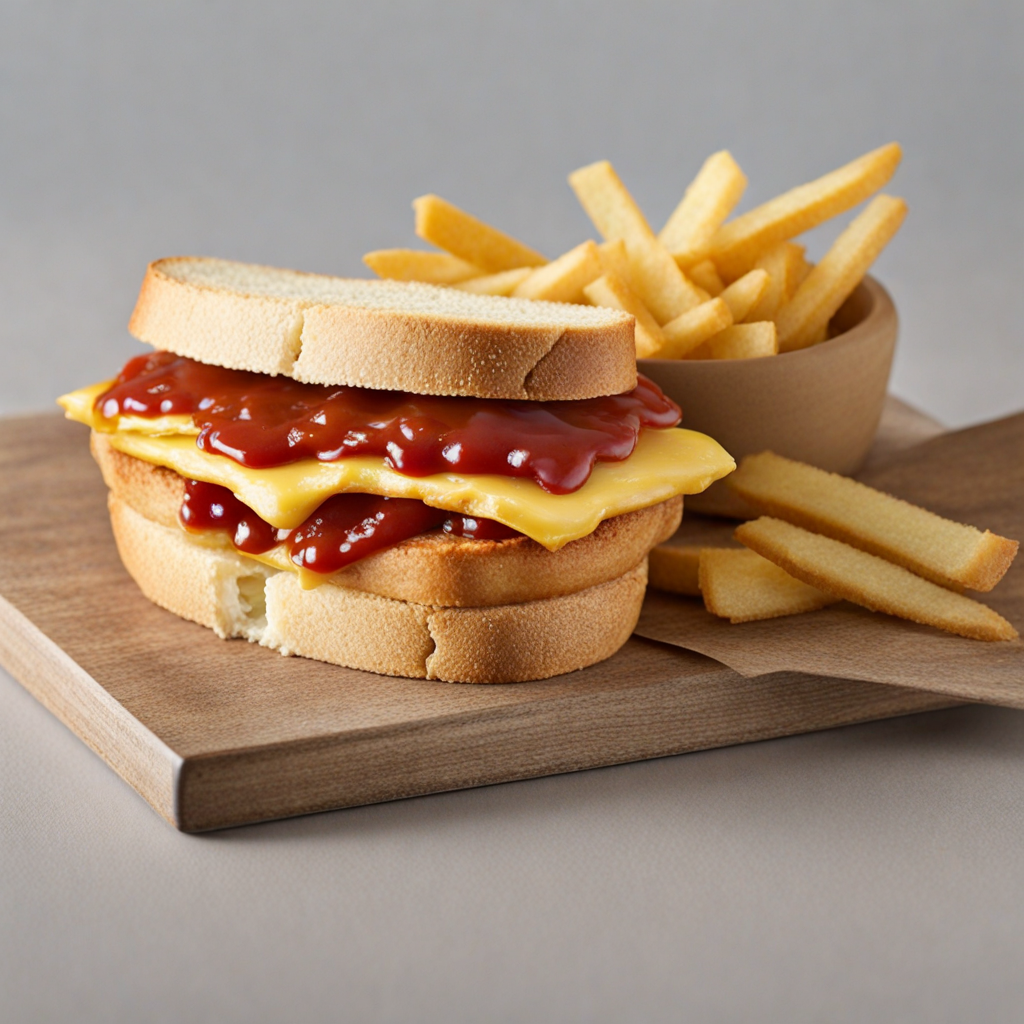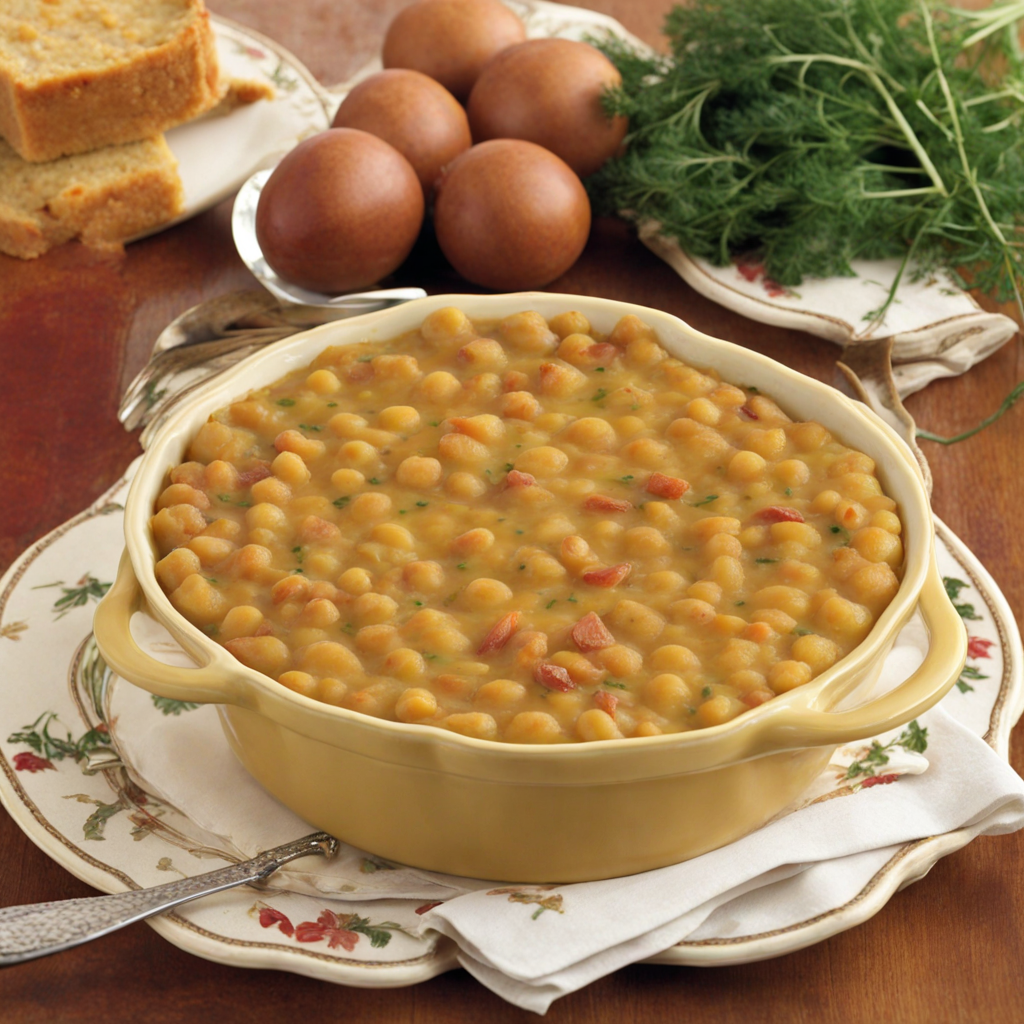Chip Butty
Chip Butty is a delightful and indulgent British comfort food that combines the simplicity of crispy chips (fries) with the soft, comforting texture of bread. Typically served in a sandwich form, this dish features thick-cut, golden-brown chips nestled between two slices of fluffy white bread or a soft roll. The chips are often seasoned with a sprinkle of salt, enhancing their flavor and creating a satisfying contrast with the bread's mildness. The result is a hearty, satisfying meal that appeals to both the taste buds and the soul, making it a beloved staple in the United Kingdom. To elevate the experience, many people choose to add condiments to their Chip Butty, with the most popular choices being ketchup, mayonnaise, or even brown sauce. These sauces add an extra layer of flavor, complementing the richness of the chips and the softness of the bread. Some adventurous eaters might even include cheese, onions, or pickles, creating a personalized version that reflects their own tastes. The beauty of the Chip Butty lies in its versatility, allowing for endless variations while maintaining its core comfort food appeal. This dish is often enjoyed as a late-night snack, a quick lunch, or a side with a hearty meal, making it a versatile choice for any occasion. Whether savored at home or found at a local chip shop, the Chip Butty stands as a testament to the joy of simple ingredients coming together to create something uniquely satisfying. With each bite, the combination of crispy, fluffy, and savory elements creates a taste sensation that embodies the spirit of British culinary tradition.
How It Became This Dish
The Chip Butty: A Cultural Icon of British Comfort Food In the landscape of British culinary traditions, the chip butty stands out as a beloved staple, combining simplicity and satisfaction in one delightful package. A chip butty, for those unfamiliar, is a sandwich made by placing hot, thick-cut French fries—known as "chips" in the UK—between two slices of bread, often slathered with butter or mayonnaise, and sometimes accompanied by sauces such as ketchup or brown sauce. This dish, with its humble ingredients and hearty appeal, offers a fascinating glimpse into the socio-cultural fabric of the United Kingdom. Origins of the Chip Butty The origins of the chip butty can be traced back to the late 19th to early 20th centuries, a time when fish and chips were gaining popularity among the working class in Britain. The fish and chip shop, or "chippy," became a fundamental part of British life, especially in industrial towns where quick, affordable meals were essential for the working populace. The combination of fried fish and chips served with a side of bread became a common way to stretch a meal and provide sustenance for those toiling in factories or mining. While the exact inception of the chip butty is obscured by time, anecdotal evidence suggests that miners in the North of England were among the first to embrace this combination. After long hours of grueling labor, the warmth of fried chips nestled between slices of bread provided not only nourishment but also comfort. The word "butty," derived from the slang term for sandwich, is believed to have originated in Northern England, further cementing the dish's roots in the working-class culture of the region. Cultural Significance The chip butty holds a special place in British culture, representing more than just a meal; it embodies the values of practicality and ingenuity. In a society where food often reflects social status, the chip butty is the great equalizer, a dish enjoyed by all, regardless of class. It's a quintessential example of "working-class food," a term that resonates deeply in a country that prides itself on its culinary heritage. The chip butty is often consumed as a late-night snack after a night out, a comfort food that soothes the soul after a few pints in the pub. In cities like Liverpool and Manchester, where the nightlife is vibrant, the chip butty is a go-to choice for revelers seeking sustenance. The dish has also found its way into local football culture, with fans munching on chip butties while cheering for their teams, cementing its status as a cultural icon synonymous with camaraderie and local pride. Moreover, the chip butty has evolved into a symbol of British regional identity. Different regions have their own unique takes on it, with variations in bread types, chip styles, and condiments. For instance, in Yorkshire, a chip butty might be served on thick-cut bread, while in London, a more artisanal approach with sourdough may be favored. Yet, regardless of the variation, the essence of the chip butty remains the same: a hearty, satisfying meal that brings people together. Development Over Time As the decades rolled on, the chip butty transitioned from its working-class roots to a dish appreciated across different strata of society. The rise of fast food in the late 20th century introduced new challenges and competition for traditional dishes like the chip butty. However, rather than fading away, the chip butty experienced a renaissance, often celebrated in food festivals and gourmet interpretations. The 1990s saw a surge in interest in comfort food, with chefs and food enthusiasts rediscovering traditional dishes and giving them modern twists. The chip butty was no exception, finding its way onto the menus of gastro pubs and trendy eateries. Gourmet versions of the chip butty began to emerge, featuring artisan breads, hand-cut chips, and a plethora of creative sauces. Chefs experimented with toppings, adding ingredients like crispy bacon, fried eggs, or even truffle oil, elevating this humble sandwich into a more sophisticated offering. Furthermore, the advent of social media has played a significant role in the chip butty's continued relevance. Platforms like Instagram and TikTok have allowed food lovers to share their creations, leading to viral trends around the dish. Online influencers have embraced the chip butty, showcasing their own interpretations and encouraging their followers to engage in this culinary tradition. This resurgence in popularity highlights the chip butty's adaptability and appeal in the modern food landscape. The Chip Butty Today Today, the chip butty remains a symbol of British comfort food, cherished by many for its nostalgic qualities and satisfying taste. It can be found in chippies across the UK, from bustling city centers to sleepy seaside towns. The simple joy of biting into a chip butty, with the warmth of the chips contrasting with the soft bread, continues to resonate with people of all ages. The dish has also garnered attention beyond the UK, with food enthusiasts around the world expressing interest in this quintessentially British snack. Whether served in a traditional fish and chip shop or a trendy café, the chip butty remains a testament to the enduring power of comfort food. In conclusion, the chip butty is more than just a sandwich; it is a cultural artifact that tells the story of the British working class, a dish that has evolved over time while maintaining its core essence. It is a reminder of the importance of food as a unifying force, transcending social barriers and connecting people through shared experiences. With each bite, one can taste not only the crispy chips and soft bread but also a rich history steeped in tradition, resilience, and community. As the UK continues to navigate the complexities of modern life, the chip butty stands as a delicious symbol of comfort, nostalgia, and cultural identity.
You may like
Discover local flavors from United Kingdom







